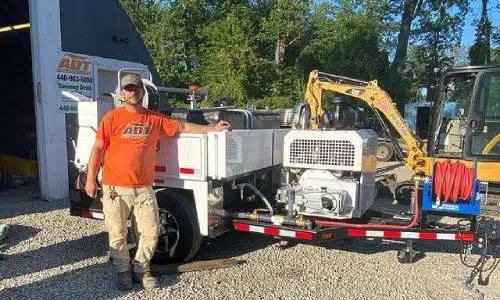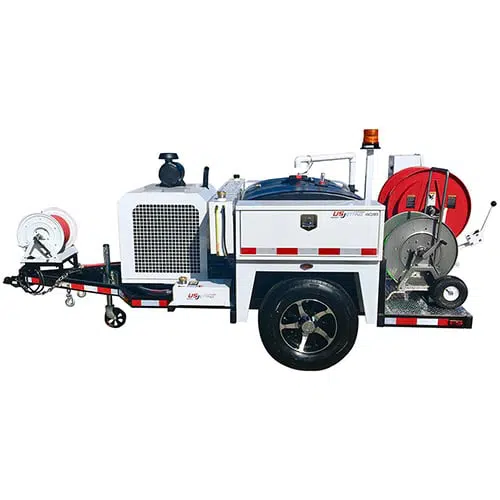
It’s the Most Wonderful Time of the Year…To Check Your Pump
As we head into winter, it becomes increasingly important to regularly service and maintains your jetting unit, so your jetting company doesn’t have to contend

Home » Hot Water Jetting – Drop It Like It’s Hot
Having spent a few years as a jetting contractor and manufacturing hydro jetting units for the last 35 years, I have come across all sorts of ideas for improving drain cleaning. Hot water has been an option around for a while, and we often get questions about whether it is necessary.
In my opinion, the only application where hot water might be helpful would be pressure washing to remove gum or dirt, but that feature is redundant if you have enough power from your jetter to pressure wash off the debris. A standard US Jetting 4018 high-pressure hydro jetter could easily tackle sticky substances that need to be pressure washed off. The same goes for de-icing a line, where people often incorrectly assume hot water is necessary. The same US Jetting 4018 can blast away ice in a line with no hot water required.
However, if a customer insists on a hot water jet, I like to ask them what their temperature rise above ambient is and the BTU’s of their burner. Consumers should be aware that if you don’t have a big enough burner, you will only get warm water, and the extra expense is just not worth it. The flow of the hydro jetter will determine the size of the burner needed. This means the standard jetting pressure and flow of 4000PSI at 18GPM will require a burner size with a high cost when in reality, that pressure alone would do the job.
In addition to not being necessary, there are quite a few drawbacks of using hot water. First, hot water jetting units require a special jetter hose if the water temperature goes above 125 degrees F. And if your jetter’s hot water temperature does not go above 125 degrees, then you are wasting your money.
In addition, if you are using 180-degree water in a grease line, you are simply melting the grease, which means it will solidify further down the pipe as it cools. Using cold water with a rotary nozzle will break up the grease into small pieces, which allows it to keep moving down the pipe. Plus, if you want to camera the line after using hot water, you have to wait for the condensation to dissipate before you can see anything. This delay can result in costly downtime for machine operators as they wait.
Lastly, there are safety risks with all high-pressure hydro-jetting jobs, which is why US Jetting offers a complete line of safety gear. However, the normal risks of jetting are intensified when working with hot water. The threat from a water strike becomes increasingly dangerous when combined with scorching hot water.
The reality is hot water hydro jetters are not necessary for almost all jetting jobs. By picking the right cold water jetting machine for your application, you can save yourself from spending unnecessary money on a device that won’t get the job done. Get real performance with a cold water US Jetting machine, custom-designed to exceed your expectations.
-Nick Woodhead

As we head into winter, it becomes increasingly important to regularly service and maintains your jetting unit, so your jetting company doesn’t have to contend

Having spent a few years as a jetting contractor and manufacturing hydro jetting units for the last 35 years, I have come across all sorts

Main Office:
850 McFarland Pkwy, Alpharetta, GA 30004 Local: 770-740-9917 | Fax: 770-740-0297
California Location:
13571 Larwin Circle, Santa Fe Springs, CA 90670 Sally Woodhead: 404-936-1718 | 562-376-4656